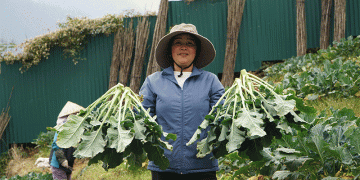The bustling Wakulima Market in Nairobi, known locally as Marikiti, has become a hotbed of contention as onion traders resist plans to move to the newly constructed Kangundo Road Market. Despite the government’s push for relocation, traders argue that the new site is inadequate for their extensive operations. At the heart of their concerns are logistical constraints, economic dynamics, and the critical role that Tanzanian onion imports play in Kenya’s supply chain.
Key Issues Raised by Traders
- Space Constraints and Logistical Challenges
One of the main concerns voiced by traders is that the Kangundo Road Market does not have the capacity to handle the hundreds of lorries that arrive daily with onions and other produce from Tanzania. During peak seasons, Marikiti Market is a hive of activity, with numerous lorries parked as workers offload and arrange sacks of onions for sale. Kennedy Odhiambo, a trader at Marikiti, emphasized the need for a spacious facility, saying, “All these vehicles and traders will not fit in the Kangundo Road Market.” - Reliance on Tanzanian Onions
The traders also pointed out that a significant portion of the onions sold in Kenya are imported from Tanzania. According to the Food and Agriculture Organization’s 2014 report, about 50% of red onions consumed in Kenya are sourced from Tanzania. These imports are critical, as they help stabilize prices, especially during times when local production is insufficient. Odhiambo noted that Tanzanian onions are often preferred by consumers due to their longer cultivation period and minimal use of pesticides and genetically modified seeds. - Economic Implications of Relocation
The influx of Tanzanian onions provides relief for consumers and businesses alike. Prices have seen dramatic fluctuations, with onions retailing as high as Sh170 per kilo earlier this year. Today, the price stands at a more manageable Sh50 per kilo, thanks largely to the consistent supply from Tanzania. Traders worry that relocating to a less accessible market could disrupt this balance, leading to inefficiencies and potential price increases. Mwangi Gikonyo, another trader, highlighted the economic impact, stating, “Onions from Tanzania have always been a reprieve because their arrival into the market usually brings prices down.”
Legal Developments and Trader Advocacy
The issue of relocation has also entered the legal arena. On September 10, 2024, Nairobi City Hall issued a notice requiring traders to move to the new Kangundo Road Market. However, in a recent ruling, Milimani High Court Judge Bahati Mwamuye halted the eviction, granting traders a reprieve until the matter is resolved in court. This order prevents Nairobi City County from evicting traders or disrupting operations at Marikiti Market, giving traders more time to advocate for their needs.
Agricultural Trends and Future Outlook
Data from the Kenya National Bureau of Statistics reveals an 11.1% increase in the price of leeks and bulb onions from February to March 2024. As onion consumption in Kenya continues to rise, projected to reach 148,000 tonnes by 2026 (up from 140,000 tonnes in 2021), maintaining efficient and robust supply chains becomes increasingly vital. Any disruptions could have significant implications for both farmers and consumers.
The resistance of Marikiti onion traders to relocating underscores the broader challenges faced by agricultural markets in urban settings. The need for adequate infrastructure, efficient logistics, and reliable supply chains is crucial to sustaining food security and price stability. As the case continues in court, a balanced solution that addresses both the government’s urban planning goals and the traders’ operational needs will be essential.































